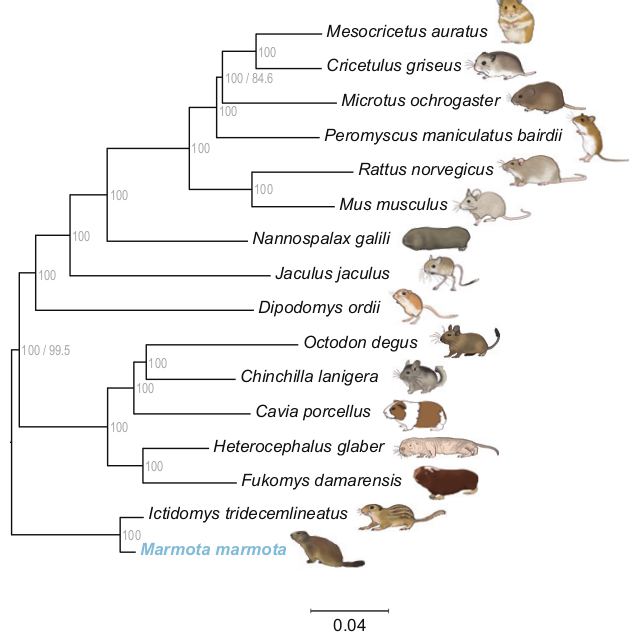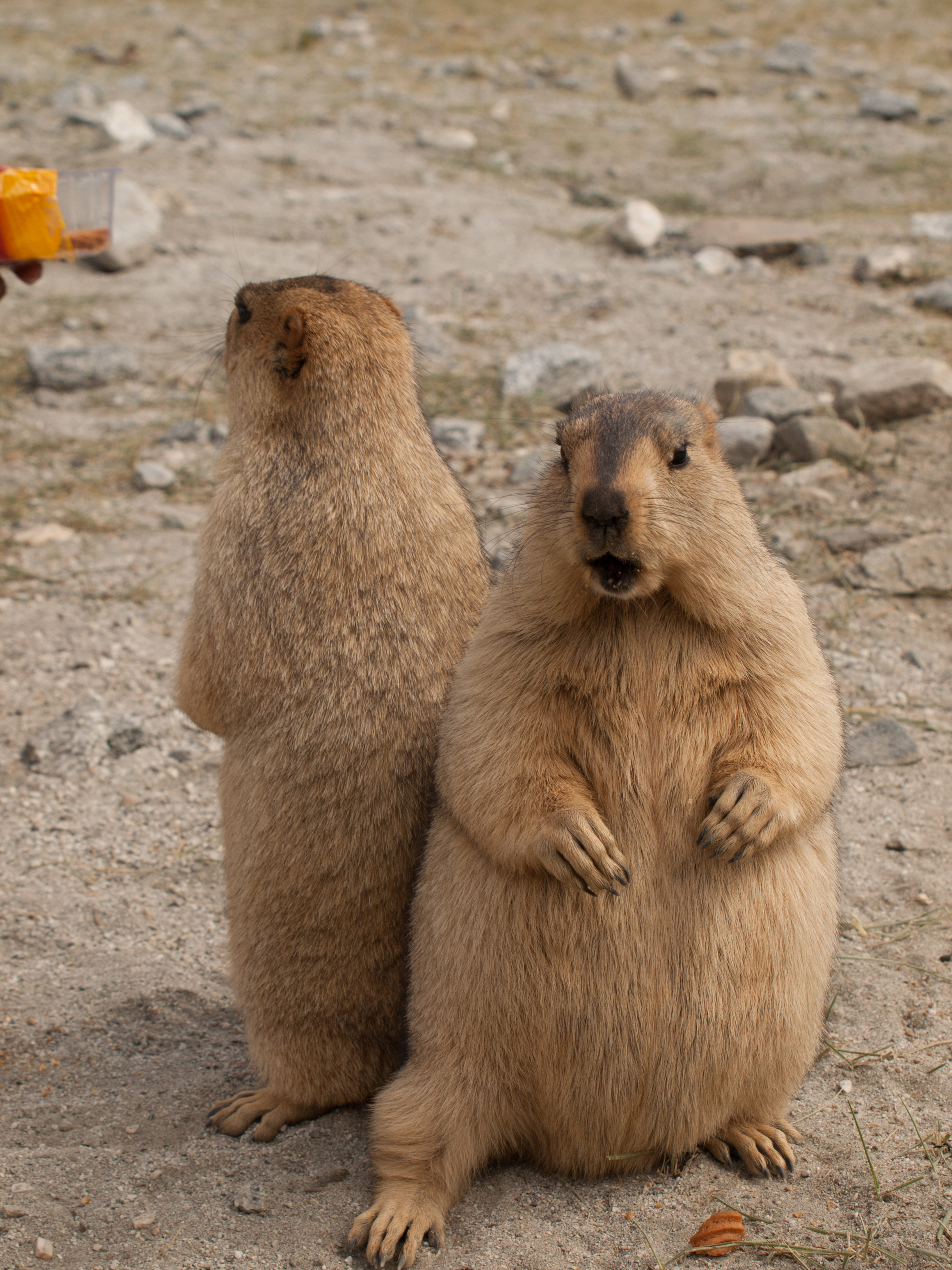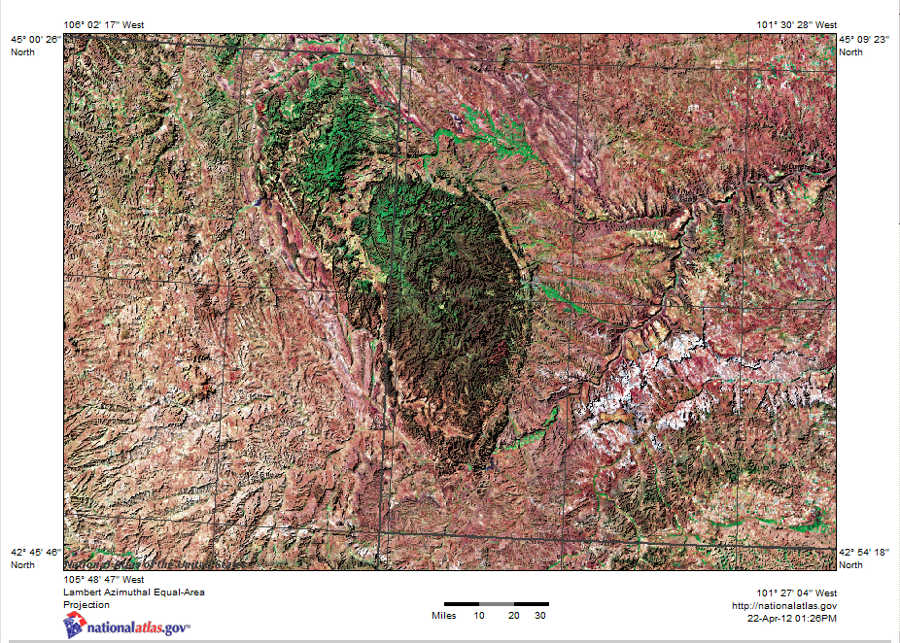|
Marmot
Marmots are large ground squirrels in the genus ''Marmota'', with 15 species living in Asia, Europe, and North America. These herbivores are active during the summer, when they can often be found in groups, but are not seen during the winter, when they hibernate underground. They are the heaviest members of the squirrel family. Description Marmots are large rodents with characteristically short but robust legs, enlarged claws which are well adapted to digging, stout bodies, and large heads and incisors to quickly process a variety of vegetation. While most species are various forms of earthen-hued brown, marmots vary in fur coloration based roughly on their surroundings. Species in more open habitat are more likely to have a paler color, while those sometimes found in well-forested regions tend to be darker. Marmots are the heaviest members of the squirrel family. Total length varies typically from about and body mass averages about in spring in the smaller species and in aut ... [...More Info...] [...Related Items...] OR: [Wikipedia] [Google] [Baidu] |
Olympic Marmot
The Olympic marmot (''Marmota olympus'') is a rodent in the squirrel family, Sciuridae; it occurs only in the U.S. state of Washington (state), Washington, on the middle elevations of the Olympic Peninsula. The closest relatives of this species are the hoary marmot and the Vancouver Island marmot. In 2009, it was declared the official List of U.S. state mammals, endemic mammal of Washington. This marmot is about the size of a domestic cat, typically weighing about in summer. The species shows the greatest sexual dimorphism found in marmots, with adult males weighing on average 23% more than females. It can be identified by a wide head, small eyes and ears, stubby legs, and a long, bushy tail. Its sharp, rounded claws aid in digging burrows. The coat (animal), coat color changes with the season and with age, but an adult marmot's coat is brown all over with small whiter areas for most of the year. The species has a diet consisting mainly of a variety of herbivore, meadow flora, ... [...More Info...] [...Related Items...] OR: [Wikipedia] [Google] [Baidu] |
Alpine Marmot
The alpine marmot (''Marmota marmota'') is a large ground-dwelling squirrel, from the genus of marmots. It is found in high numbers in mountainous areas of central and southern Europe, at heights between in the Alps, Carpathians, Tatras and Northern Apennines. In 1948 they were reintroduced with success in the Pyrenees, where the alpine marmot had disappeared at end of the Pleistocene epoch. Evolution The alpine marmot originates as an animal of Pleistocene cold steppe, exquisitely adapted to this ice-age climate. As such, alpine marmots are excellent diggers, able to penetrate soil that even a pickaxe would have difficulty with, and spend up to nine months per year in hibernation. Since the disappearance of the Pleistocene cold steppe, the alpine marmot persists in the high altitude alpine meadow. During the colonisation of Alpine habitat, the alpine marmot has lost most of its genetic diversity through a bottleneck effect. It could not rebuild its genetic diversity eve ... [...More Info...] [...Related Items...] OR: [Wikipedia] [Google] [Baidu] |
Alaska Marmot
The Alaska marmot (''Marmota broweri''), also known as the Brooks Range marmot or the Brower's marmot, is a species of rodent in the family Sciuridae. Once considered to be the same species as the hoary marmot, it is now known to be unique. Alaska marmots are found in the scree slopes of the Brooks Range, Alaska. Specifically, they prefer to dwell on rocky, mountainous terrain, generally near lakes. They eat vegetation found on mountainsides, such as grasses, seeds, and lichen. Their relatively thick bodies are covered in dense, grey fur. They live in large colonies that consist of multiple families. During the winter, they hibernate for long periods of time in underground burrows. While not well researched, they are not believed to be particularly threatened, by human activity or otherwise. The Alaskan government has designated February 2 as " Marmot Day," a holiday intended to recognize the prevalence of marmots in the state, similar to the more widely celebrated American holi ... [...More Info...] [...Related Items...] OR: [Wikipedia] [Google] [Baidu] |
Himalayan Marmot
The Himalayan marmot (''Marmota himalayana'') is a marmot species that inhabits alpine grasslands throughout the Himalayas and on the Tibetan Plateau. It is IUCN Red Listed as Least Concern because of its wide range and possibly large population. Taxonomy ''Arctomys Himalayanus'' was the scientific name proposed by Brian Houghton Hodgson in 1841 who described marmot skins from the Himalayas. In the 19th century, several Himalayan marmot specimens were described and proposed as subspecies. The Himalayan marmot is very closely related to the Tarbagan marmot (''M. sibirica'') and somewhat more distantly to the—in morphology rather different—black-capped marmot (''M. camtschatica''). These three form a species group and its nearest relative is the bobak species group, which includes the bobak marmot (''M. bobak'') itself, as well as the gray (''M. baibacina'') and forest-steppe marmots (''M. kastschenkoi''). In the past, the relatively short-furred and short-tailed marmots of t ... [...More Info...] [...Related Items...] OR: [Wikipedia] [Google] [Baidu] |
Yellow-bellied Marmot
The yellow-bellied marmot (''Marmota flaviventris''), also known as the rock chuck, is a large, stout-bodied ground squirrel in the marmot genus. It is one of fourteen species of marmots, and is native to mountainous regions of southwestern Canada and western United States, including the Rocky Mountains, Sierra Nevada, and Mount Rainier in the state of Washington, typically living above . The fur is mainly brown, with a dark bushy tail, yellow chest and white patch between the eyes, and they weigh up to approximately . They live in burrows in colonies of up to twenty individuals with a single dominant male. They are diurnal and feed on plant material, insects, and bird eggs. They hibernate for approximately eight months starting in September and lasting through the winter. Description Yellow-bellied marmots usually weigh from when fully grown, though males typically weigh more than females. The weight fluctuates quite drastically through the year, with the least measured in ea ... [...More Info...] [...Related Items...] OR: [Wikipedia] [Google] [Baidu] |
Tarbagan Marmot
The tarbagan marmot (''Marmota sibirica'') is a species of rodent in the family Sciuridae. It is found in China (Inner Mongolia and Heilongjiang), northern and western Mongolia, and Russia (southwest Siberia, Tuva, Transbaikalia). In the Mongolian Altai Mountains, its range overlaps with that of the Gray marmot. The species was classified as Endangered species, endangered by the IUCN in 2008. Two subspecies are recognized: * ''M. s. sibirica'' * ''M. s. caliginosus'' As a game animal The tarbagan marmot has been eaten for centuries in Mongolian cuisine, the native cuisine of Mongolia, and in particular in a local dish called ''boodog''. The meat is cooked by inserting hot stones, preheated in a fire, into the abdominal cavity of a deboned marmot. The skin is then tied up to make a bag within which the meat cooks. Hunting of marmots for food is typically done in autumn when the animals are heavier since they are preparing for hibernation. The Russian explorer Richard Maack, who ... [...More Info...] [...Related Items...] OR: [Wikipedia] [Google] [Baidu] |
Ground Squirrel
Ground squirrels are members of the squirrel family of rodents (Sciuridae), which generally live on or in the ground, rather than trees. The term is most often used for the medium-sized ground squirrels, as the larger ones are more commonly known as marmots (genus ''Marmota'') or prairie dogs, while the smaller and less bushy-tailed ground squirrels tend to be known as chipmunks (genus ''Tamias''). Together, they make up the "marmot tribe" of squirrels, Marmotini, a division within the large and mainly ground squirrel subfamily Xerinae, and containing six living genera. Well-known members of this largely Holarctic group are the marmots (''Marmota''), including the American groundhog, the chipmunks, the susliks (''Spermophilus''), and the prairie dogs (''Cynomys''). They are highly variable in size and habitus, but most are remarkably able to rise up on their hind legs and stand fully erect comfortably for prolonged periods. They also tend to be far more gregarious than other sq ... [...More Info...] [...Related Items...] OR: [Wikipedia] [Google] [Baidu] |
Rodent
Rodents (from Latin , 'to gnaw') are mammals of the order Rodentia (), which are characterized by a single pair of continuously growing incisors in each of the upper and lower jaws. About 40% of all mammal species are rodents. They are native to all major land masses except for New Zealand, Antarctica, and several oceanic islands, though they have subsequently been introduced to most of these land masses by human activity. Rodents are extremely diverse in their ecology and lifestyles and can be found in almost every terrestrial habitat, including human-made environments. Species can be arboreal, fossorial (burrowing), saltatorial/richochetal (leaping on their hind legs), or semiaquatic. However, all rodents share several morphological features, including having only a single upper and lower pair of ever-growing incisors. Well-known rodents include mice, rats, squirrels, prairie dogs, porcupines, beavers, guinea pigs, and hamsters. Rabbits, hares, and pikas, whose i ... [...More Info...] [...Related Items...] OR: [Wikipedia] [Google] [Baidu] |
Squirrel
Squirrels are members of the family Sciuridae, a family that includes small or medium-size rodents. The squirrel family includes tree squirrels, ground squirrels (including chipmunks and prairie dogs, among others), and flying squirrels. Squirrels are indigenous to the Americas, Eurasia, and Africa, and were introduced by humans to Australia. The earliest known fossilized squirrels date from the Eocene epoch, and among other living rodent families, the squirrels are most closely related to the mountain beaver and to the dormice. Etymology The word ''squirrel'', first attested in 1327, comes from the Anglo-Norman which is from the Old French , the reflex of a Latin word , which was taken from the Ancient Greek word (; from ) 'shadow-tailed', referring to the long bushy tail which many of its members have. The native Old English word for the squirrel, , survived only into Middle English (as ) before being replaced. The Old English word is of Common Germanic origin, cognat ... [...More Info...] [...Related Items...] OR: [Wikipedia] [Google] [Baidu] |
Tatra Mountains
The Tatra Mountains (), Tatras, or Tatra (''Tatry'' either in Slovak language, Slovak () or in Polish language, Polish () - ''plurale tantum''), are a series of mountains within the Western Carpathians that form a natural border between Slovakia and Poland. They are the highest mountains the Carpathians. The Tatras are distinct from the Low Tatras ( sk, Nízke Tatry), a separate Slovak mountain range further south. The Tatra Mountains occupy an area of , of which about (77.7%) lie within Slovakia and about (22.3%) within Poland. The highest peak, called Gerlachovský štít, at 2,655 m (8710 ft), is located north of Poprad, entirely in Slovakia. The highest point in Poland, Rysy, at 2,499 m (8200 ft), is located south of Zakopane, on the border with Slovakia. The Tatras' length, measured from the eastern foothills of the ''Kobylí vrch'' (1109 m) to the southwestern foot of ''Ostrý vrch'' (1128 m), in a straight line, is (or according to some), and str ... [...More Info...] [...Related Items...] OR: [Wikipedia] [Google] [Baidu] |
Deosai National Park
Deosai National Park () is a high-altitude alpine plain (plateau) and National Park located in Astore, Gilgit-Baltistan. Deosai Plains are situated at an average elevation of 4,114 metres (13,497 ft) above sea level and considered as the second highest plateaus in the world. Etymology The name came about from the folk tale immortalised by Mian Muhammad Baksh in his poem, "Saif al-Mulook"; the word 'Deosai' means 'the Shadow of the Giant': the word "Deo" being a contraction of 'Deva', and the word 'Sai' being one of 'Saya' i.e. 'Shadow'.Sai or Sain also an acronym for swami or lord. Balti people call this place 'Ghbiarsa' referring to 'Summer's Place' because it is only accessible in summer. Geography The Deosai National Park is located in western Himalayas in Gilgit Baltistan (GB), Pakistan. It has an average elevation of above sea level, making the Deosai Plains the second highest plateau in the world after Changtang Tibetan Plateau. The park protects an area of . I ... [...More Info...] [...Related Items...] OR: [Wikipedia] [Google] [Baidu] |
Black Hills
The Black Hills ( lkt, Ȟe Sápa; chy, Moʼȯhta-voʼhonáaeva; hid, awaxaawi shiibisha) is an isolated mountain range rising from the Great Plains of North America in western South Dakota and extending into Wyoming, United States. Black Elk Peak (formerly known as Harney Peak), which rises to , is the range's highest summit. The Black Hills encompass the Black Hills National Forest. The name of the hills in Lakota is ', meaning “the heart of everything that is." The Black Hills are considered a holy site. The hills are so called because of their dark appearance from a distance, as they are covered in evergreen trees. Native Americans have a long history in the Black Hills and consider it a sacred site. After conquering the Cheyenne in 1776, the Lakota took the territory of the Black Hills, which became central to their culture. In 1868, the U.S. government signed the Fort Laramie Treaty of 1868, establishing the Great Sioux Reservation west of the Missouri River, and exempt ... [...More Info...] [...Related Items...] OR: [Wikipedia] [Google] [Baidu] |








